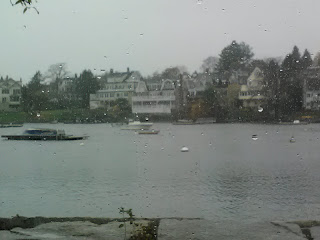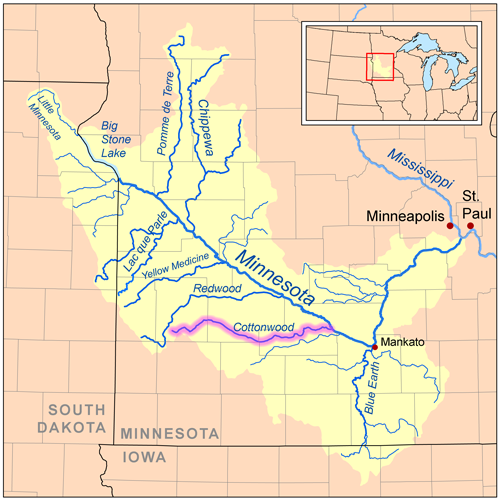It is the political season and I find
myself turning off the news and withdrawing from conversations. I remain frustrated by the lack of fiscal
restraint, the elevation of either the market or the government, and the lack
of focus on what really works on the ground.
The rhetoric at both political ends remains at a level that is far
detached from the scale at which communities are built and maintained.
In the midst of my discouragement, it
was refreshing to recently attend a lecture at Gordon College by Michael
Gerson, a conservative, nationally-syndicated columnist for the Washington
Post. He was a speech-writer for
President George W. Bush, but also works with Bono, serving as a Senior Advisor
to ONE, a bipartisan organization that works to combat extreme poverty and
preventable diseases. Rather than
mirroring the rhetoric that we hear in the public sphere, he reminded me of two
concepts that have profoundly shaped my thinking—subsidiarity and mediating
institutions—and how these two concepts and perspectives have the promise of
moving American politics beyond the present political gridlock.
The concept of subsidiarity is a principle for societal design
that calls for the movement of decisions affecting people's lives to the lowest
scale of capable social organization.
Under the subsidiarity principle, the higher authority has the burden of
proof about the need to centralize. And
the higher authority has an obligation to strengthen the capacity of the lower
level institutions to manage responsibilities.
It is about capacity-building at the lowest levels wherever possible
(Curry 2002: Community on Land).
The obligation to build capacity—rather
than to take control—leads to the strengthening of what are called “mediating
structures, ” the institution that exist between the individual and the
state. Mediating institutions include
everything from non-profits, to the church, to community groups. In my book Community on Land, I argue that the strengthening of these
mediating structures is essential for ecological and social health because they
exist and work at the scale of many problems, and their solutions are often more
sustainable—it is the scale at which results are monitored and observed. Mediating institutions also emphasize local
knowledge and context and build trust across political differences because they
reflect a common shared commitment to a place.
I recently spent time conversing with people about these
issues and their story of public response to a recent incident when I visited
the Bay of Plenty in New Zealand. On
October 5, 2011, the cargo ship, the Rena, a Liberia-flagged 235m vessel, heading
toward Tauranga, New Zealand crashed into the Astrolabe Reef, twelve kilometers
off shore and within view of the harbor.
The cargo ship was carrying 1900 tons of fuel and 1386 containers (11 of which contained hazardous substances). Of course, Liberian-flagged ships are
common—I think you could argue that the free market leads to a tendency toward
the migration of registration toward the countries with the least regulation and
cost for registration for cargo ships.

After
the crash, Maritime New Zealand, the government agency responsible for
responding to such incidents, attempted to identify the owner and begin to
address the potential problems. In the
meantime the anxiety and concern of the local people in Tauranga increased—it
was their beach that was threatened.
Soon a slick was seen, stretching like a narrow ribbon. Dispersants were used but quickly proved
ineffective in rough seas. Four dead
birds are found in the water near the ship so a bird cleaning and
rehabilitation center was established. By
the third day, heavy oil began to spill into the sea. The anxiety of locals increases with the
arrival of a little blue penguin in trouble on local beaches. Unease increased as a storm approached with
little action to empty the ship.
The
arrival of heavy
seas made action impossible and by the sixth day, globules of oil were found on
the beaches and foul fumes were in the air.
Many locals were speechless and a local Maori leader cursed official
over their lack of action.
Local people, grieving and upset
over the lack of government action to protect their local environment, began to
wander onto the beach, ignoring the warnings to stay away. Out of desperation
and a need to respond, they scraped up contaminated sand, leaving little
plastic bags of the stuff dotted on beaches.
Local lifeguards took upon themselves the responsibility of keeping
people off the beach, but soon realized that it was affecting their
relationships with their communities.
Al Fleming from Forest and Bird
spelled out what is at stake. 10,000 grey-faced petrels, thousands of diving
petrels, white-faced storm petrels and fluttering shearwaters breeding on
nearby islands, several thousand gannets, 200 to 300 little blue penguins. Shorebirds such as endangered New Zealand
dotterels, and oystercatchers and white-fronted terns were starting to nest on
sandy beaches just above the high tide mark.
There was also danger to finfish, shellfish, crustaceans, filter feeders
and other seafloor life.
About the 7th day, Environment
Minister Nick Smith told a crowd in Tauranga that oil has been pouring out and
would continue to do so for weeks. The
locals asked: Why have we not been
allowed to be involved? While they talked,
a wandering albatross was found dead, so covered in oil it could barely be
identified. Two hundred birds had died and more than 1000 would succumb to the
effects of the oil. Debris was strewn
far and wide, including thousands of meat patties scattered on one beach.
 |
| Maritime New Zealand |
 |
| Maritime New Zealand |
Finally, Maritime New Zealand began
to engage with the public as a partner, coordinated through the Bay of Plenty
Regional Council. An information network
was established, volunteers were trained, and community action and engagement
was finally allowed to be funneled into positive action. More than 8000 people volunteered. This was their beach and their
responsibility. Their story is one that
needs to be told more broadly.
 |
| Maritime New Zealand |
 |
| Maritime New Zealand |
 |
| Maritime New Zealand |
 |
| Maritime New Zealand |
This tragedy occurred in a specific
place. It emotionally and physically
affected the community that inhabited that place, a community that collectively
felt responsibility for the environment around them. And decision-makers at each level had to
learn to work across scale collaboratively to respond effectively and honor and
build the capacity of the local community.
So why do we get caught in the
dichotomy between market and government?
The market needs oversight by government, particularly in the areas of
environmental concern that involve the common good, non-market resources such
as clean air and water, and in areas that involve the commons. The market alone cannot protect the world’s
oceans and the adjacent beaches from the environmental destruction that comes
from the migration of registration of cargo ships to countries with the lowest
possible safety measures and training in place.
The market is not a perfect instrument.
But if we put a market price on the cost of oil and included the cost of
such accidents, it would certainly help.
The market can help us signal real costs. The federal-level government needs to work in
partnership with local institutions.
Otherwise it can undermine local government, local initiative, and local
ownership over the stewardship of its resources. When it does, it undermines its own ability
to fulfill its duty.
Subsidiarity—it is about the responsibility of higher levels
of authority to build capacity at the lowest levels possible, leading to the strengthening of the mediating structures that
are essential for the sustainability of ecological and social health in the
places where we live. It is about being
on the beach and close to the ground when crises strike.




.jpg)
















